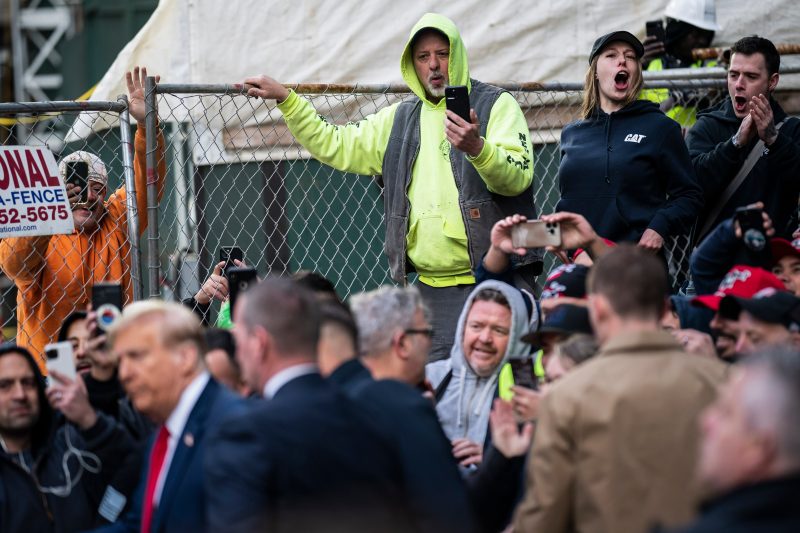In recent years, the relationship between union members and political leaders has become a topic of increasing importance. This dynamic is particularly relevant in the context of the Trump administration, as President Donald Trump has made significant efforts to court support from union members. However, despite his attempts, Trump’s approach to economic policies and labor issues has led to a complicated relationship with this key demographic.
One of the primary areas of contention between Trump and union members is his stance on trade policies. While Trump has framed his trade initiatives as measures to protect American workers and industries, many union leaders and members have expressed concerns about the potential negative impacts of these policies. The imposition of tariffs on steel and aluminum, for example, has raised fears of job losses in industries that rely on these materials, leading to tensions between the Trump administration and organized labor.
Furthermore, Trump’s efforts to roll back regulations and protections for workers have also been met with skepticism and resistance from union members. The administration’s moves to weaken labor and environmental regulations, as well as its support for right-to-work laws, have been perceived as attacks on unions and the working class. These actions have fueled distrust and alienation among many union members, who see Trump’s policies as favoring corporate interests over the well-being of workers.
Despite these challenges, Trump has managed to maintain some level of support among certain segments of union members. His promises to revive American manufacturing, create jobs, and boost economic growth have resonated with workers in industries that have been struggling in recent years. Additionally, Trump’s strong stance on issues like immigration and national security has struck a chord with some union members who prioritize these issues above labor concerns.
Moving forward, the relationship between Trump and union members is likely to remain complex and multifaceted. As the 2020 presidential election approaches, both Trump and his opponents will continue to vie for the support of this crucial voting bloc. How Trump navigates these challenges and addresses the concerns of union members will have significant implications for his reelection prospects and the broader political landscape.




























